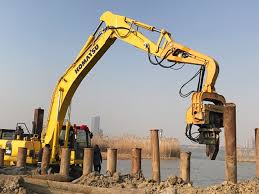What’s the Deepest Part of the Ocean? A Dive into the Abyss

The ocean, covering more than 70% of our planet’s surface, remains one of the most mysterious and unexplored frontiers of Earth. While much attention is given to space exploration, the vast depths of our own planet’s oceans still hold countless secrets. Among the most fascinating questions posed by scientists, explorers, and the curious alike is: What is the deepest part of the ocean?
The answer lies in a dark, cold, and crushingly pressurized location in the Pacific Ocean: the Mariana Trench, specifically a spot within it known as the Challenger Deep.
Understanding Ocean Depth
Before delving into the specifics of the Mariana Trench, it’s important to grasp the concept of ocean depth. Oceanographers typically divide the ocean into several zones based on depth and light penetration:
-
Epipelagic Zone (0–200 meters) – Sunlit and teeming with life.
-
Mesopelagic Zone (200–1,000 meters) – The “twilight zone” with limited light.
-
Bathypelagic Zone (1,000–4,000 meters) – Cold and dark, with few species adapted to survive.
-
Abyssopelagic Zone (4,000–6,000 meters) – Pitch black and near freezing.
-
Hadalpelagic Zone (6,000–11,000 meters) – The deepest, least explored region.
The Challenger Deep lies at the very bottom of the hadal zone.
The Mariana Trench: Earth’s Deepest Feature
The Mariana Trench is a crescent-shaped trench in the western Pacific Ocean, east of the Mariana Islands. It stretches over 2,550 kilometers (1,580 miles) in length and about 69 kilometers (43 miles) in width. The trench is formed at a convergent plate boundary, where the Pacific Plate is subducting beneath the smaller Mariana Plate.
This geological activity causes the seafloor to be pushed downward, forming the trench.
Challenger Deep: The Deepest Known Point
Within the Mariana Trench lies the Challenger Deep, the absolute deepest known point in Earth’s seabed. Located approximately 10.9 kilometers (6.8 miles) below sea level, its depth is often compared to the cruising altitude of a commercial airplane—except in reverse. To put it in perspective, if Mount Everest were placed in the Challenger Deep, its peak would still be over 2,000 meters underwater.
The depth of the Challenger Deep has been measured several times using different technologies. The most accurate measurements have come from multibeam sonar mapping and deep-sea submersibles. The U.S. Center for Coastal & Ocean Mapping estimated it at 10,984 meters (36,037 feet), though exact numbers can vary slightly depending on the methods and conditions.
History of Exploration
The first attempt to measure the depth of the trench was made in 1875 during the HMS Challenger expedition using a weighted rope, giving the location its name: Challenger Deep.
Significant milestones in its exploration include:
-
1960 – Bathyscaphe Trieste: Swiss oceanographer Jacques Piccard and U.S. Navy Lieutenant Don Walsh descended to the bottom of the trench. They reached a depth of about 10,916 meters, making them the first humans to do so.
-
2012 – Deepsea Challenger: Hollywood filmmaker and explorer James Cameron made a solo dive to the Challenger Deep in a specially designed submersible. His expedition captured high-resolution video footage and collected samples.
-
2019 – DSV Limiting Factor: Victor Vescovo, an American explorer and former naval officer, reached an estimated depth of 10,927 meters, breaking previous solo dive records. His Five Deeps Expedition marked the first time someone had reached the deepest points in all five oceans.
Life in the Deep
One of the most compelling aspects of the deep ocean is the life that manages to survive in such extreme conditions. Temperatures near freezing, intense pressure (over 1,000 times atmospheric pressure), and complete darkness create an environment unlike any other.
Despite this, researchers have discovered microorganisms, amphipods, and strange fish species in the hadal zone. These creatures have evolved unique adaptations like bioluminescence, slow metabolism, and pressure-resistant cellular structures.
One significant concern is the presence of pollution even at these depths. Recent studies have detected microplastics and heavy metals in samples taken from the trench, proving that human impact extends even to the most remote parts of the planet.
The Technology Behind Deep-Sea Exploration
Exploring the deepest parts of the ocean is an enormous challenge. The equipment must withstand intense pressure, cold, and darkness. Submersibles used for such missions include:
-
Remotely Operated Vehicles (ROVs) – Tethered and controlled from a ship.
-
Autonomous Underwater Vehicles (AUVs) – Untethered and pre-programmed.
-
Human-occupied Vehicles (HOVs) – Built with thick, pressure-resistant hulls.
For example, the DSV Limiting Factor used by Victor Vescovo was engineered from specially forged titanium to survive the crushing pressure at extreme depths.
Why Does It Matter?
Understanding the deepest parts of the ocean has both scientific and environmental importance:
-
Climate Science: Deep ocean currents and processes help regulate the Earth’s climate.
-
Biodiversity: New species discovered may have implications in biotechnology and medicine.
-
Earth Science: Studying tectonic plate interactions enhances our knowledge of earthquakes and volcanic activity.
-
Conservation: Discovering pollution even in the Challenger Deep emphasizes the global scale of environmental degradation.
Final Thoughts
The Mariana Trench and its Challenger Deep continue to represent the final frontier on Earth. It is a place of awe-inspiring depth, pressure, and mystery. As technology advances, we are likely to uncover more secrets hidden in the abyss. The journey to the deepest parts of the ocean reminds us not only of human ingenuity and curiosity but also of the fragile beauty and interconnectedness of our planet.
In an age where we dream of reaching Mars, it is worth remembering that some of Earth’s most mysterious landscapes still lie undiscovered beneath the waves—waiting in the silent, black depths of the ocean.






Leave a Comment